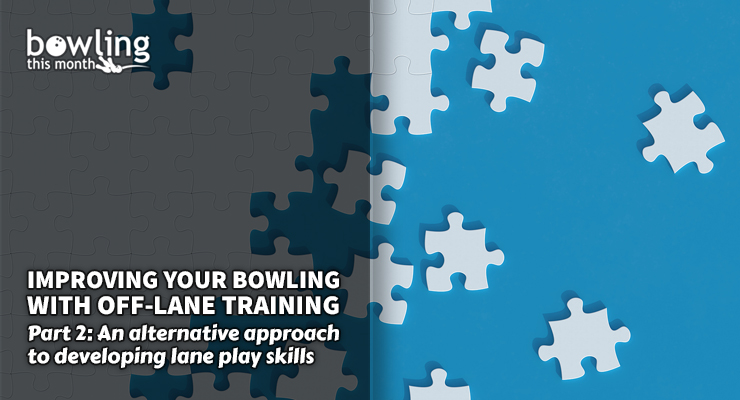Article Contents
- 1. Four types of focus
- 2. Lane play and broad-external focus
- 2.1. Contextual information versus relevant information
- 3. Lane play and broad-internal focus
- 3.1. A note on working memory
- 4. Lane play and card games
- 5. Feel bowlers versus analytical bowlers
- 5.1. But I’m a thinker!
- 6. A note for coaches
- 7. Conclusion
Note: This article is only available to Bowling This Month subscribers.
Ask bowlers of any level what they’d like to improve and one of the most likely answers will be something related to lane play. Over the years, I’ve written plenty of articles about this topic, but I wanted to take an alternative approach this time. As a follow-up to last month’s article for developing physical and mental skills away from the bowling center, we’ll start by breaking down the root skills when it comes to recognizing and adapting to the lanes, and then look at how to develop them in ways most people haven’t considered.
First, we’ll review the four different types of focus that we all use to various degrees of effectiveness, and how they apply to bowling. Then we’ll look at how to develop these areas of focus through non-bowling activities. Finally, we’ll discuss the two basic kinds of bowlers when it comes to decision-making, as well as the weaknesses each group will need to address.
Four types of focus
In The Basics of Improving Your Bowling Game – Part 3, I discuss the four areas of focus and how they relate to a typical bowling shot cycle. As a quick review, focus can be divided along two main areas, creating four different kinds of focus. The two types are internal versus external focus and broad versus narrow focus. Graphically, it looks a bit like this:

The two types of focus divide our focus into four categories: narrow-internal, narrow-external, broad-external, and broad-internal.
Many people mistake focus for persistence and think that it is entirely in the realm of narrow-external focus. When little Jimmy is daydreaming in math class, his teacher might yell, “Focus!” but what he really means is, “Focus on me!” Daydreaming is actually a form of broad-internal focus, whereas paying attention to the teacher in math class is narrow-external focus. (Incidentally, solving a math problem is also broad-internal focus.)
In everyday life, we all switch back and forth constantly among these four areas of focus, and we all have natural preferences for where we’d like to be. Driving your car? You’re using broad-external focus to pay attention to everything going on around you. Looking at your dash to change the radio station? That’s narrow-external, and you are momentarily blind to all the other cues in the environment. Playing an argument over in your head (that you’ve won six times in a row!)? That’s broad-internal focus. You might not be blind to the ...
Already a premium member? Click here to log in.


